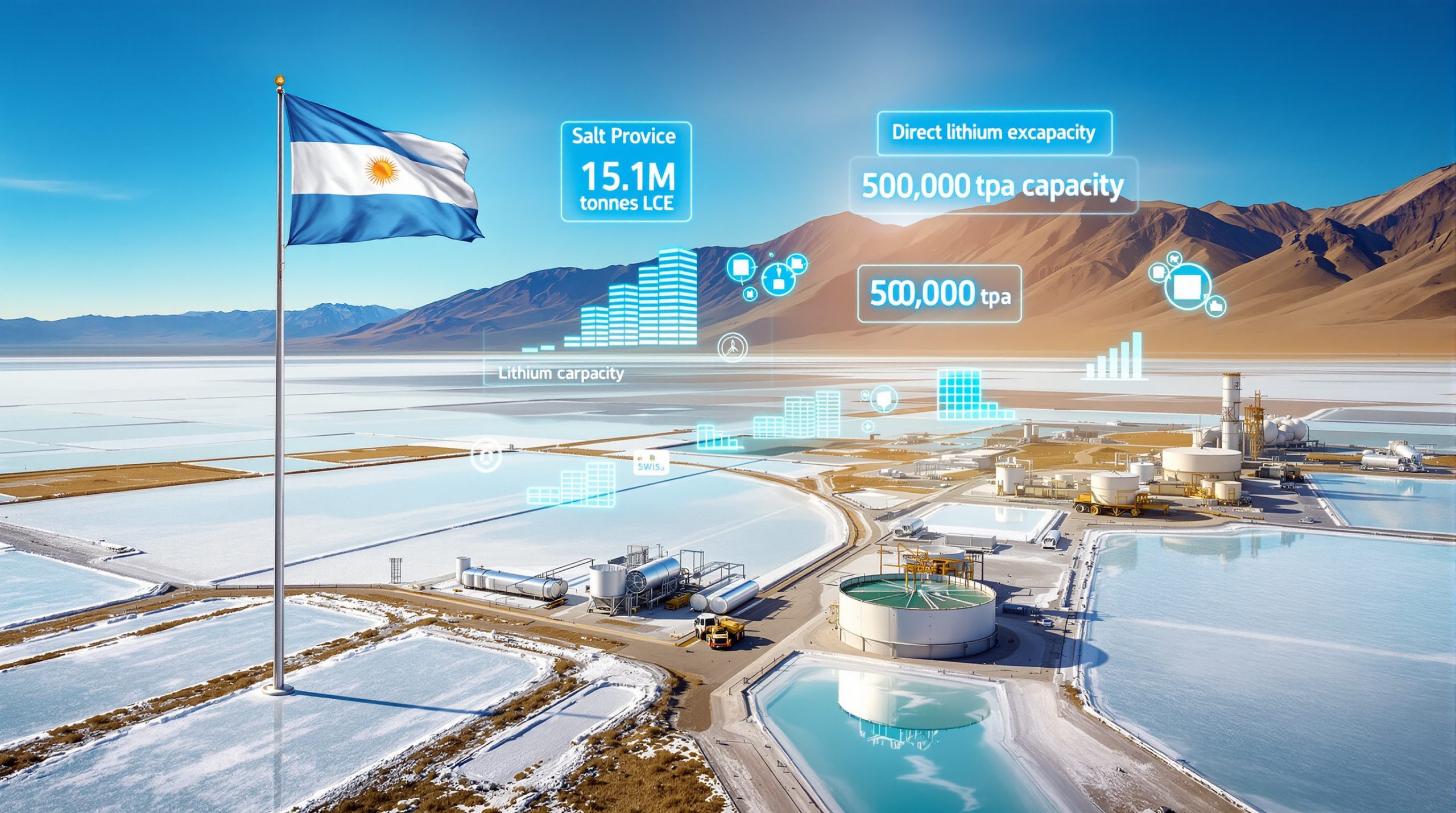Why Canada's Nickel Processing Revolution Matters for Global Clean Energy
The global transition toward electric vehicles and renewable energy storage has fundamentally transformed the strategic minerals landscape. While traditional nickel applications centered on stainless steel production, today's market demands ultra-high purity materials capable of powering advanced battery technologies. This paradigm shift has positioned Canada's innovation in nickel processing to evolve from a conventional mining nation into a leader in next-generation processing technologies.
The Critical Distinction Between Battery-Grade and Industrial Nickel
Modern electric vehicle batteries utilizing Nickel-Manganese-Cobalt (NMC) and Nickel-Cobalt-Aluminum (NCA) cathode chemistries require Class 1 nickel with 99.9% purity levels, significantly exceeding specifications needed for conventional industrial applications. According to the International Nickel Study Group's 2024 analysis, this premium-grade material enables the high energy density cathodes essential for extended driving range and superior battery performance in electric vehicles.
The energy density improvements achieved through Class 1 nickel are substantial. Battery systems utilizing high-purity nickel cathodes deliver approximately 20-25% better energy content compared to industrial-grade alternatives, directly translating to extended vehicle range per kilowatt-hour of battery capacity.
Market Forces Driving Processing Innovation
Global automakers are actively seeking secure, sustainable nickel supply chains to support their electrification objectives. The International Energy Agency's Global EV Outlook 2024 indicates that electric vehicle sales reached approximately 14 million units in 2023, representing 18% of total passenger vehicle sales worldwide.
This unprecedented demand has created exceptional opportunities for countries with advanced processing capabilities to capture higher value-added segments of the nickel value chain. Battery-grade nickel commands a price premium of 15-25% above commodity-grade nickel, according to London Metal Exchange pricing data.
However, supply constraints remain significant. Currently, only approximately 20% of global nickel production meets Class 1 battery-grade specifications, creating substantial market opportunities for countries capable of developing advanced processing infrastructure.
How Canada's Geological Advantages Support Advanced Processing Technologies
Canada's northern territories contain some of the world's most promising nickel sulphide deposits, which offer distinct processing advantages over laterite formations found in tropical regions. The Canadian Shield's geological architecture provides exceptional conditions for high-grade sulphide concentration.
The Superiority of Sulphide Ore Processing
Processing Method Comparison
| Ore Type | Processing Method | Energy Intensity (MWh/tonne Ni) | Carbon Footprint (tonnes CO2/tonne Ni) | Achievable Purity |
|---|---|---|---|---|
| Sulphide | Flotation + Hydrometallurgy | 8-12 | 6-8 | 95-98% |
| Laterite | HPAL | 18-25 | 12-18 | 70-85% |
| Laterite | Pyrometallurgy | 22-30 | 15-22 | 60-80% |
Sulphide deposits enable significantly more efficient concentration through flotation processes, requiring substantially less energy than the high-pressure acid leaching methods typically used for laterite ores. The Society for Mining, Metallurgy & Exploration's 2024 best practices analysis indicates that sulphide flotation typically achieves 85-92% recovery rates compared to 65-75% for laterite processing.
Strategic Geographic Positioning
Northern Ontario's Ring of Fire represents a 5,000-square-kilometer geological formation containing multiple high-grade nickel sulphide systems within the James Bay Lowlands region. Conservative estimates from the Ontario Geological Survey suggest the formation contains nickel resources exceeding 18-22 million tonnes of nickel metal equivalent, representing approximately 7-8% of global identified nickel resources.
This concentrated resource base provides economies of scale that support large-scale processing infrastructure development. The geometric concentration of these sulphide systems enables shared infrastructure including:
- Integrated processing facilities serving multiple deposit areas
- Consolidated electrical transmission infrastructure
- Shared water treatment and recycling systems
- Combined environmental monitoring networks
Key Insight: The proximity of multiple deposits within the Ring of Fire enables shared infrastructure development, reducing per-unit processing costs while maximising resource utilisation efficiency through economies of scale and operational synergies.
What Revolutionary Processing Technologies Are Emerging in Canada?
Canadian companies are pioneering breakthrough technologies that address both environmental concerns and processing efficiency in nickel production. These innovations represent significant advances beyond conventional processing methodologies, particularly the Tamarack nickel‑copper project.
Carbon Sequestration Through Tailings Carbonation
Step-by-Step Carbon Sequestration Process:
- Tailings Generation: Mining operations produce serpentine-rich waste materials containing 35-45% magnesium silicate by weight
- CO₂ Capture: Industrial carbon dioxide is captured from processing operations or external industrial sources
- Mineral Carbonation: Tailings react with CO₂ under controlled pH, temperature, and pressure conditions
- Carbonate Formation: Conversion produces stable magnesite (MgCO₃) and other carbonate minerals
- Permanent Storage: Carbon becomes permanently locked in geological formations with millennial-scale stability
This innovative approach transforms mining waste into a carbon storage solution, with theoretical potential to sequester 0.6-0.8 tonnes of CO₂ per tonne of serpentine tailings under optimal conditions. Large-scale operations could potentially achieve 200,000-600,000 tonnes of annual CO₂ sequestration capacity, with significant upside potential if mineral carbonation processes are accelerated through advanced techniques.
Hydrogen Integration in Metal Processing
Advanced processing facilities are investigating hydrogen plasma technology as a potential replacement for conventional carbon-based reduction agents. If successfully scaled, this technology could theoretically produce nickel with water vapour as the primary byproduct instead of carbon dioxide emissions.
Important Note: This technology remains developmental as of late 2024. No commercial-scale hydrogen plasma nickel processing operations currently exist in Canada or globally. Natural Resources Canada's Clean Mineral Processing Research Initiative supports multiple research projects investigating hydrogen-based reduction, but commercial deployment timelines remain 5-10 years away, contingent on technological breakthroughs and substantial capital investment.
AI-Driven Process Optimisation
Machine learning algorithms are revolutionising ore processing through AI in mining operations:
- Flotation optimisation: Real-time parameter adjustment achieving up to 5-8% recovery rate improvements
- Predictive maintenance: Advanced scheduling reducing unplanned downtime by 15-25%
- Energy optimisation: Process efficiency gains of 3-7% through intelligent consumption management
- Sensor integration: Comprehensive data analytics from processing facility operations
These AI applications represent established technologies currently being deployed across Canadian mining operations, according to the International Council on Mining and Metals' 2023 smart mining analysis.
Which Canadian Regions Are Leading Nickel Processing Innovation?
Northern Ontario's Emerging Processing Hub
The Ring of Fire region is positioned to potentially become North America's largest integrated nickel processing centre, assuming successful completion of feasibility studies, regulatory approvals, and infrastructure development. However, as of late 2024, the region remains in advanced exploration and feasibility study phases, with no commercial-scale processing facility having reached final investment decision or construction phase.
Development faces significant infrastructure challenges including:
- Limited road access requiring all-season transportation corridors
- Absence of established electrical transmission to remote sites
- Challenging permafrost and muskeg terrain requiring specialised engineering
- Comprehensive Indigenous consultation processes with Mushkegowuk Council First Nations
Total estimated development capital for Ring of Fire infrastructure ranges from $10-15 billion in preliminary assessments, subject to substantial revision as projects advance through detailed engineering phases.
Manitoba's Thompson Belt Proven Operations
The Thompson Nickel Belt continues serving as North America's most established nickel processing region, leveraging decades of operational experience to implement advanced extraction methodologies. Vale operates the primary facilities producing approximately 80,000-100,000 tonnes of nickel annually from legacy operations.
Historical cumulative production from the Thompson Belt exceeds 2.5 million tonnes of nickel since development began in the 1950s, demonstrating the long-term viability of Canadian sulphide processing operations.
Quebec's Research and Development Leadership
Quebec hosts several mining technology research institutions developing advanced hydrometallurgical processes. While specific cost reduction claims require verification through peer-reviewed studies, industry literature suggests potential improvements of 10-20% in specific processing applications through optimised hydrometallurgical techniques.
Research partnerships between Quebec universities and industry consortia focus on:
- Advanced leaching chemistry optimisation
- Closed-loop water system development
- Energy efficiency improvements in electrowinning
- Environmental impact reduction methodologies
How Do Environmental Innovations Differentiate Canadian Nickel Processing?
Given the nickel importance and uses in clean energy applications, environmental considerations are paramount. Canada's innovation in nickel processing emphasises sustainability through comprehensive frameworks.
Net-Zero Emission Processing Development
Canadian facilities are implementing comprehensive strategies targeting carbon neutrality through integrated environmental innovation frameworks supporting decarbonisation in mining:
Environmental Innovation Components:
- Renewable energy integration: Solar, wind, and hydroelectric power systems for processing operations
- Closed-loop water systems: Minimising freshwater consumption through advanced recycling technologies
- Waste heat recovery: Improving overall energy efficiency through thermal management systems
- Biodiversity offset programmes: Ecosystem protection and enhancement initiatives
Circular Economy Integration
Processing facilities are designed to maximise resource utilisation through comprehensive by-product recovery:
- Multi-metal recovery: Copper, cobalt, and precious metals extraction from primary nickel processing streams
- Tailings repurposing: Conversion of waste materials into construction aggregates and building materials
- Water recycling systems: Advanced treatment enabling 85-95% water reuse rates
- Energy recovery: Heat and steam generation from waste process streams
These circular economy principles enable Canadian operations to achieve superior environmental performance compared to conventional processing methodologies while capturing additional revenue streams from by-product sales.
What Infrastructure Developments Enable Processing Scale-Up?
Strategic Transportation Corridors
Critical Infrastructure Components:
- All-season road access: Permanent transportation links to remote deposit areas replacing seasonal ice roads
- Electrical transmission: High-voltage power lines supporting energy-intensive processing operations
- Rail connections: Direct links to major markets and ports for efficient product distribution
- Port facilities: Marine terminals capable of handling bulk concentrate and refined metal shipments
Infrastructure development represents a fundamental prerequisite for large-scale processing operations in remote northern regions. Current infrastructure limitations significantly constrain development timelines and increase capital requirements for processing facility development.
Digital Infrastructure Integration
Modern processing facilities require advanced digital connectivity supporting:
- Remote monitoring systems: Real-time operational oversight and control capabilities
- Data analytics platforms: Comprehensive processing optimisation and predictive maintenance systems
- Supply chain coordination: Integrated logistics management and market connectivity
- Environmental compliance: Automated monitoring and reporting systems meeting regulatory requirements
The Canadian Internet Registry Authority's 2024 analysis indicates that robust digital infrastructure (broadband, fibre optics) remains limited in many northern Canadian locations, creating potential barriers to AI implementation in remote processing facilities.
How Does Canadian Innovation Compare to Global Competitors?
Competitive Advantages in Processing Technology
Global Nickel Processing Comparison
| Region | Primary Advantage | Processing Focus | Environmental Standards | Current Capacity (tonnes/year) |
|---|---|---|---|---|
| Canada | Clean technology integration | High-purity sulphides | Stringent regulations | 200,000-250,000 |
| Indonesia | Low-cost laterite processing | Industrial-grade production | Developing standards | 800,000+ |
| Australia | Established infrastructure | Mixed ore processing | Advanced compliance | 150,000-200,000 |
| Russia | Large-scale operations | Traditional methods | Variable standards | 280,000-320,000 |
Canada's competitive positioning emphasises technological innovation and environmental sustainability rather than production volume. This strategic approach aligns with global automaker preferences for responsibly produced battery materials, potentially commanding premium pricing for environmentally superior products.
Technology Transfer and Knowledge Sharing
Canadian research institutions collaborate with international partners to advance processing technologies while maintaining competitive advantages in clean production methods. These partnerships enable knowledge transfer whilst preserving proprietary technological developments within Canadian operations.
What Economic Impact Will Advanced Processing Create?
Value-Added Manufacturing Opportunities
Domestic processing capabilities enable Canada to capture significantly higher value from its mineral resources through progressive value addition:
Value Progression Analysis:
- Raw ore export: $2,000-3,000 per tonne (baseline)
- Concentrated nickel: $8,000-12,000 per tonne (3-5x increase)
- Battery-grade nickel: $18,000-25,000 per tonne (8-12x increase)
- Finished battery components: $35,000-50,000 per tonne (15-20x increase)
This value multiplication demonstrates the substantial economic benefits of developing domestic processing capabilities rather than exporting raw materials for processing in other jurisdictions, particularly in the context of Canada's energy transition.
Employment and Skills Development
Advanced processing facilities create high-skilled employment opportunities across multiple disciplines:
- Process engineering: 150-200 positions per major facility
- Environmental monitoring: 75-100 specialised roles per operation
- Advanced manufacturing: 300-500 production and maintenance positions
- Research and development: 50-75 technical and scientific roles
These employment opportunities typically offer salaries 25-40% above regional averages and require specialised technical training, creating substantial economic multiplier effects in northern communities.
What Challenges Must Be Overcome for Widespread Implementation?
Capital Investment Requirements
Large-scale processing facilities require substantial upfront investments, typically ranging from $2-5 billion for integrated operations. This necessitates comprehensive financial structuring including:
- Government policy support: Tax incentives, loan guarantees, and regulatory streamlining
- International partnerships: Risk-sharing mechanisms with global automakers and technology companies
- Project financing: Development of specialised financial instruments for critical mineral projects
- Long-term contracts: Offtake agreements providing production security and revenue certainty
Regulatory and Permitting Considerations
Complex environmental assessments and Indigenous consultation processes can extend project development timelines by 3-5 years beyond initial estimates. Streamlined regulatory frameworks whilst maintaining environmental protection standards are essential for timely implementation.
Key regulatory considerations include:
- Federal and provincial environmental impact assessments
- Indigenous rights and title consultations
- Water use permits and environmental discharge approvals
- Wildlife habitat protection and biodiversity offset requirements
Skills and Workforce Development
Advanced processing technologies require specialised technical expertise that may not be readily available in remote regions. Comprehensive training programmes and partnerships with educational institutions are necessary to develop the required workforce.
Critical Skills Requirements:
- Hydrometallurgical process engineering
- Environmental monitoring and compliance
- Advanced automation and control systems
- Predictive maintenance and reliability engineering
What Does the Future Hold for Canadian Nickel Processing Innovation?
Integration with Battery Manufacturing
Canada's strategic positioning includes potential development of complete battery supply chains, from raw material extraction through finished cell production. This vertical integration could position the country as a comprehensive clean energy materials supplier, capturing maximum value-added opportunities.
Integrated battery manufacturing could include:
- Cathode active material production facilities
- Battery cell assembly and testing operations
- Advanced battery recycling and recovery systems
- Next-generation solid-state battery development
Export Market Development
Growing global demand for responsibly produced battery materials creates opportunities for Canadian producers to command premium pricing for environmentally superior products. Key target markets include:
- North American EV manufacturers: Proximity advantages and supply chain security
- European automotive sector: Strong preferences for sustainably produced materials
- Asian battery manufacturers: Technical partnerships and technology transfer opportunities
Technology Commercialisation and Licensing
Successful demonstration of breakthrough processing technologies could create additional revenue streams through technology licensing to international operations. Canadian innovations in carbon sequestration, hydrogen processing, and AI optimisation represent potentially valuable intellectual property assets.
Disclaimer: Future market projections and technological development timelines involve significant uncertainty. Actual outcomes may vary substantially from current projections due to market conditions, technological challenges, regulatory changes, and global economic factors.
Frequently Asked Questions About Canadian Nickel Processing Innovation
How does carbon sequestration in nickel processing actually work?
Mining operations generate serpentine-rich tailings containing magnesium silicate minerals that naturally react with carbon dioxide under controlled conditions. This process is enhanced through engineered systems that optimise pH, temperature, and pressure parameters, permanently storing CO₂ as stable carbonate minerals whilst neutralising potentially harmful mining waste. The National Academy of Sciences' 2019 analysis confirms that carbonated minerals remain geologically stable for millennia.
What makes Canadian nickel processing more sustainable than alternatives?
Canadian operations integrate renewable energy sources, implement closed-loop water systems achieving 85-95% reuse rates, and utilise breakthrough carbon capture technologies. These innovations can potentially result in net-negative carbon emissions during processing operations, particularly when combined with mineral carbonation of tailings. Additionally, Canada's stringent environmental regulations ensure comprehensive oversight of processing operations.
How long does it take to develop advanced nickel processing facilities?
Comprehensive processing facilities typically require 7-10 years from initial planning through full production, including environmental assessments (2-3 years), permitting processes (1-2 years), construction phases (3-4 years), and commissioning activities (1-2 years). Remote northern locations may require additional time for infrastructure development and workforce establishment.
What role does artificial intelligence play in modern nickel processing?
AI systems optimise flotation parameters through real-time process adjustments, predict equipment maintenance needs using sensor data analysis, maximise metal recovery rates through pattern recognition, and minimise energy consumption via intelligent load management. The International Council on Mining and Metals reports that successful AI implementation can improve recovery rates by 5-8% whilst reducing operational costs by 3-7%.
Are hydrogen-based processing technologies commercially viable?
Hydrogen plasma technology for nickel processing remains in pilot and demonstration phases as of late 2024. Whilst theoretically promising for producing zero-carbon metal processing, commercial deployment faces significant technical and economic challenges. Natural Resources Canada's research initiatives suggest commercial viability remains 5-10 years away, contingent on technological breakthroughs and substantial capital investment in specialised equipment.
Further Exploration:
Readers interested in learning more about Canada's critical mineral strategies and processing innovations can explore additional educational content available through the Natural Resources Canada Critical Minerals Centre of Excellence, the Mining Industry Human Resources Council, and peer-reviewed publications from the Canadian Institute of Mining, Metallurgy and Petroleum focusing on sustainable mining technologies and clean energy material supply chains.
Ready to Capitalise on the Next Canadian Nickel Discovery?
Discovery Alert's proprietary Discovery IQ model delivers instant notifications on significant Canadian nickel discoveries across the ASX, empowering subscribers to identify actionable opportunities in the growing battery metals sector. Begin your 30-day free trial today to position yourself ahead of the market and gain a competitive edge in one of the most promising critical mineral sectors.




